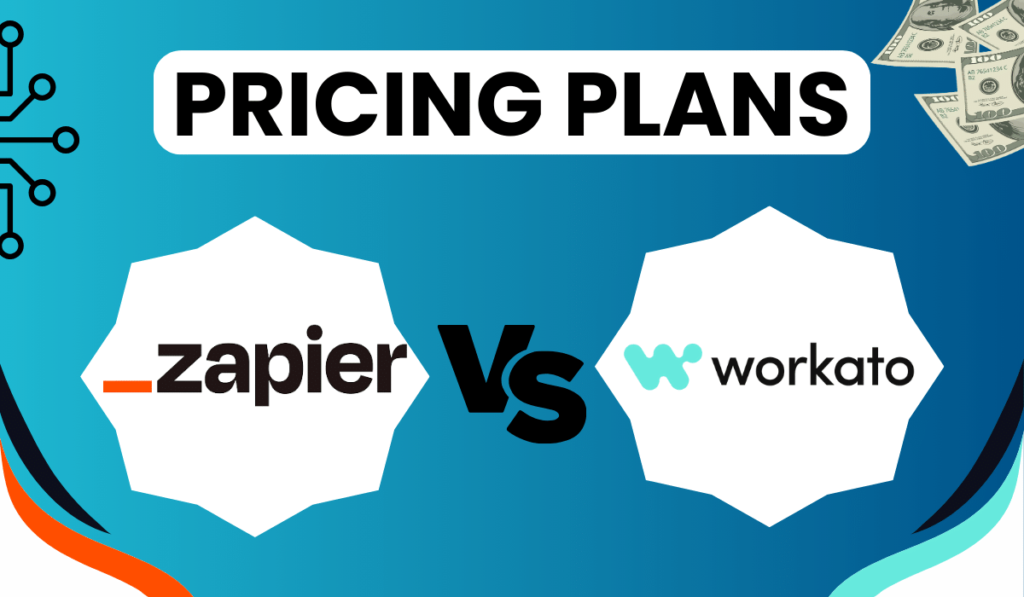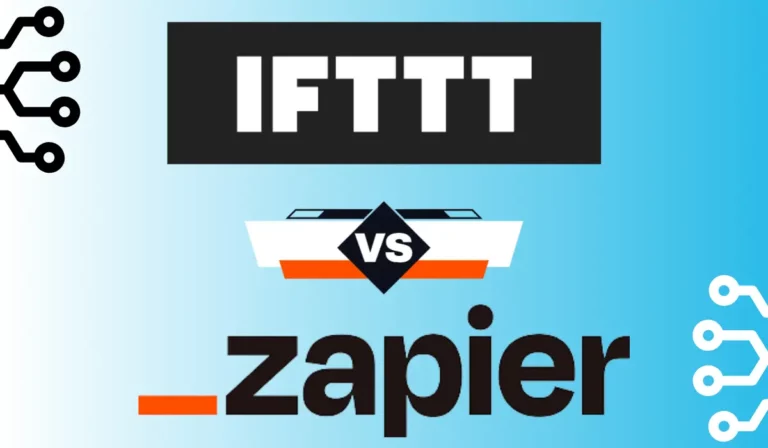Zapier vs Workato
Integrating different software applications workato vs zapier is crucial for businesses today. However, manually moving data between apps can be time-consuming and error-prone. That’s where integration platforms like Workato and Zapier come in. These tools allow you to automate workflows and connect apps without coding.
In this article, we’ll compare Workato and Zapier – two of the most popular iPaaS (integration platform as a service) solutions. We’ll look at their features, integrations, pricing, and other factors to help you determine which is the better option for your needs. Let’s get started!
Zapier vs Workato: What is Zapier?
Zapier is a pioneer in the integration and automation space. It was Founded in 2011, and It aims to help anyone connect their apps and automate workflows. It uses a straightforward trigger-action model. You select a trigger event in one app (e.g., a new row in a spreadsheet) and then define what action it should initiate in another app (e.g., create a new email).
Zapier connects over 6000+ apps through its pre-built integrations called Zaps. It acts as the glue between web apps, providing an easy way to integrate them without using code. The platform handles authentication and data transfer between the connected apps.
Workato vs ZapierWhat is Workato?
Workato, founded in 2013, is a leading enterprise integration and automation platform. Like Zapier, it also uses a trigger-action model to connect apps and data.
But Workato provides more powerful and complex automations beyond two-step Zaps. You can create multi-step workflows called Recipes that connect many apps. Recipes can include logic, branching conditions, loops, and custom code.
Workato also offers native connectivity to on-premise systems and databases. It allows integration with legacy and unique systems. Its connectors, called Workato Connectors, handle all the integration complexities.

Workato vs Zapier: Functionality
Workato features
- Multi-step recipes with complex logic and conditions
- Loops for repetitive actions
- Custom code and scripts
- Scheduled and queued executions
- Native connectivity to databases, APIs, ERPs
- Role-based access control
- Supports sequential and parallel processing
Zapier features
- Simple two-step Zaps
- Conditional logic in some cases
- Schedule Zaps to run on time, trigger
- Account-based access controls
- Code steps with JavaScript
- Mainly focused on cloud app integration

Workato vs. Zapier: Integration
Workato integration
- Over 650+ pre-built connectors and APIs
- Connect on-premise apps, databases, APIs
- Build custom connectors for unique apps or data sources
- Real-time data sync between apps
- Bi-directional sync supported
- Built-in transformation and mapping of data
Zapier Integration
- Over 6000+ pre-built integrations with apps
- Focus on SaaS apps and cloud services
- Custom integrations are possible but limited
- Polling and real-time hooks to sync data
- Support one-way or bi-directional sync
- Field mapping to transform data between apps
For common SaaS apps, both platforms provide out-of-the-box integrations. Workato offers more flexibility for non-standard systems. But Zapier has pre-built connectivity to more niche apps that Workato may lack.

Workato vs Zapier: Pricing Plan
Zapier pricing plan
- Free plan best for individuals who need basic automation, 100 tasks/month
- Starter at $19/month – 750 tasks/month, multi-step Zaps
- Team at $69/month – 2k tasks/month, unlimited users
- Professional at $49 month – 2ktasks/month, unlimited premium apps
- Custom enterprise pricing is available
Workato pricing plan
- Premium plan at $99/month – ideal for 50 users, 5,000 transactions/month
- Professional plan at $499/month – best for 500 users, 50,000 transactions/month
- Enterprise Plan at $1,999/month – best for more than 500 users, custom transactions/month
Zapier has a basic free plan, but Workato does not. Their starter plans are comparable, but Workato includes more tasks per month. At higher tiers, Workato provides more users and tasks for the price. But Zapier offers more incremental pricing vs Workato’s larger jumps.
Conclusion
Workato provides greater customization and complex integrations between a variety of apps, including on-premise. Zapier is suited for simple, lightweight automation using its huge library of niche web app integrations.
For advanced enterprise needs, Workato is the better choice. However, small teams may find Zapier easier to use if they only require simple two-step processes between cloud apps.
Evaluate the apps you want to connect, integration complexity, and pricing to determine which platform fits your requirements. Both Workato and Zapier can save enormous time by automating workflows across apps.
FAQs
What apps can I integrate on Workato vs Zapier?
Both platforms support popular apps like Salesforce, Office 365, Marketo, Slack, etc. Workato also connects legacy systems and databases. Zapier has pre-built integrations for over 6000+ niche web apps and tools.
Can I do complex, multi-step workflows on Zapier?
Yes, you can do complex multi-step workflows, it will help you integrate multiple actions and processes at once.
Is Workato harder to use than Zapier?
Workato has a steeper learning curve due to its more powerful capabilities. However, it provides a user-friendly web interface, and recipes require no coding. Zapier is extremely easy to use for simple use cases.
How do the pricing plans compare?
Zapier has cheaper plans starting at $19/month. Workato’s starter plan is $99/month with more features. At the high end, Workato has better pricing for large usage.
Can Workato integrate with on-premise systems?
Yes, Workato can integrate with legacy, on-premise apps, databases, and APIs using its connectors. Zapier is mainly focused on cloud/SaaS app integration.




